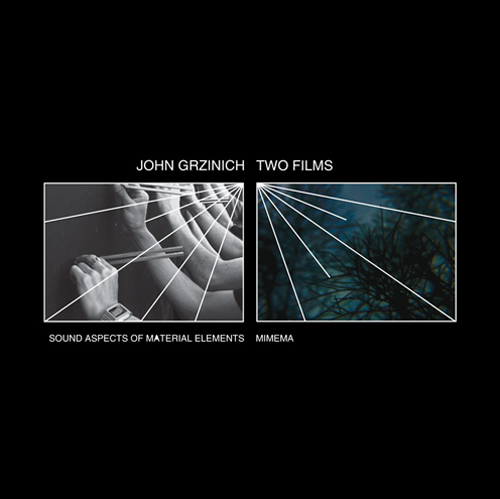Two films. JOHN GRZINICH
(And/oar 2012)
Review by Jay-Dea Lopez
Electrical power-lines humming above open farmlands, lifeless branches hitting ice-coated wires, waves echoing as they lap inside pipes; these are only a few of the sounds captured by John Grzinich in “Two Films”. This mesmerising DVD, released by the and/OARlabel, unveils the sonic life that envelops us, unheard without the aid of microphones or the inclination to listen. Born in New York, and currently living in Estonia, Grzinich has been working with sound composition since the early 1990s. Only more recently has heseriously focused on film as a creative medium.
It is the bleak landscape of Estonia that features in “Sound Aspects of Material Elements”, the first of the two films. In grainy black and white footage the audience is privy to long static shots of abandoned spaces and beautiful wastelands. As we observe the frozen Estonian countryside’s lop-sided power-lines and decaying farm structures it is easy to imagine a localized apocalypse occurred here decades before. All visual cues in the film suggest a blanket of silence pervades the area, however it is through Grzinich’s well-trained ear and microphone work that this assumption is shown to be false.Electricity continues to flow through the power-lines, its lethal charge being heard in low oscillating drones; water drips from the ceiling of an abandoned cement building, falling into pools whose varying depths create a polyphonic melody; a dormant tree branch sways in the breeze, delicately striking a wire at irregular intervals.
The sounds that Grzinich captures are mesmerising, each are featured for less than four minutes at a time. The recordings seamlessly fade in and out to create a single composition. “Sound Aspects of Material Elements” also shows that Grzinich is not content to compose solely through the use of found sound. In several shots we see Grzinich interacting with objects in the environment. Pieces of detritus become objects to strike, scratch and record. A huge metal tank echoes as three men scrape its side; an old tower creaks and groans as Grzinich climbs its damaged rungs; in a beautiful scene a metal surface amplifies the sound of tuning forks as they are slowly placed upon it.
In other recordings Grzinich uses creative techniques to present new ways of listening to familiar objects. Microphones are inserted into bottles and then placed next to open fires, the pop and crackle of burning wood echoes inside their fragile glass chambers; waves and dried grass are heard through the distorting effect of long tubes; a wire is stretched across a stream, its reverberating tone shifting under the bubbling flow of water. Explaining his approach Grzinich says “All the sounds captured formed the basis for each shot emphasizing how the combinations of certain materials (metal, wood, glass) along with natural elements (water, wind, fire), transforms our perception of even the most common everyday places or situations”. After watching this we listen again to these primeval elements with a renewed vigour.
“Mimema”, the second of the two films, is described by Grzinich as “the soundtrack for the half submerged floaters drifting at dusk on the still lakes”. An organ softly holds long wavering notes alongside recurring images of foliage, cobwebs, foggy countryside, and a face calmly immersed in water. Visually “Mimema’s” pace of editing sometimes runs ahead of the composition, nonetheless an emotional impression resonates long after the film reaches its end.
“Two Films” is a profound work of art, throughout its duration we are spellbound. As the films unfold we sit mesmerized by the soundsand images emanating from the screen. It is a pleasure to watch Grzinich in the field, the visual connection with the sounding objects providing a greater appreciation for his work. After viewing “Two Films” it is hard not to imagine the sonic potentials that lie around us, untapped, waiting for a microphone to be directed towards them.
[John Grzinich]



